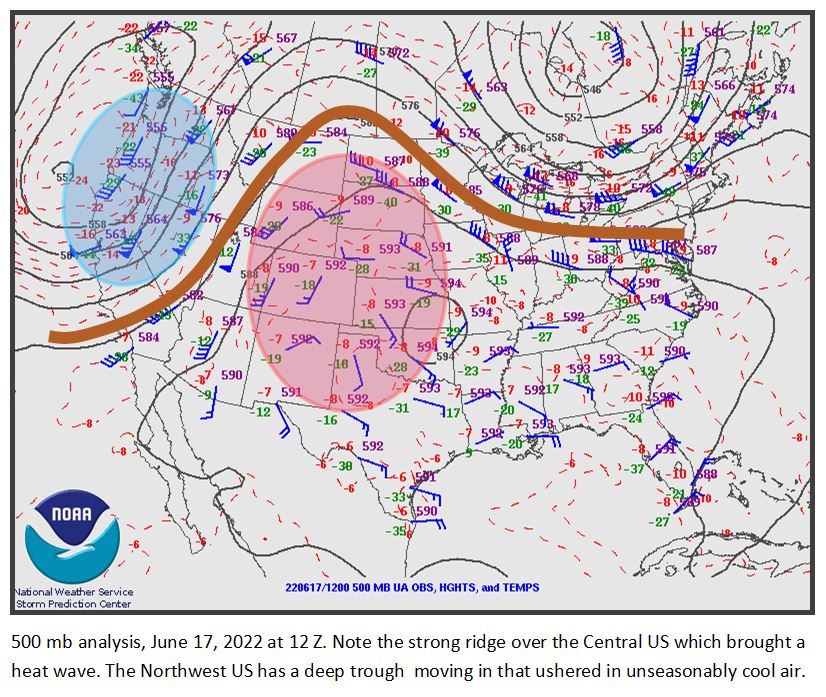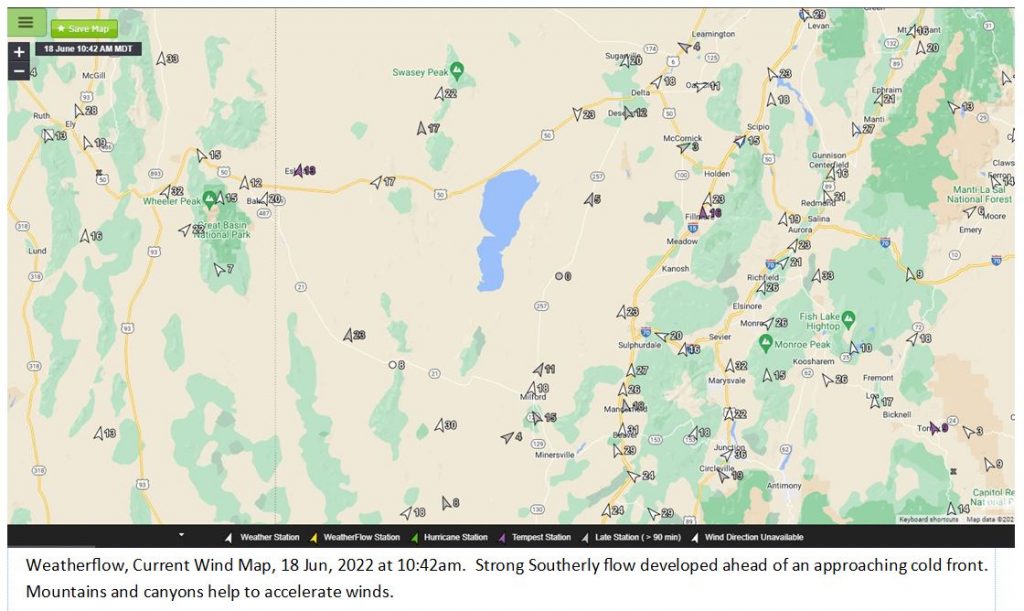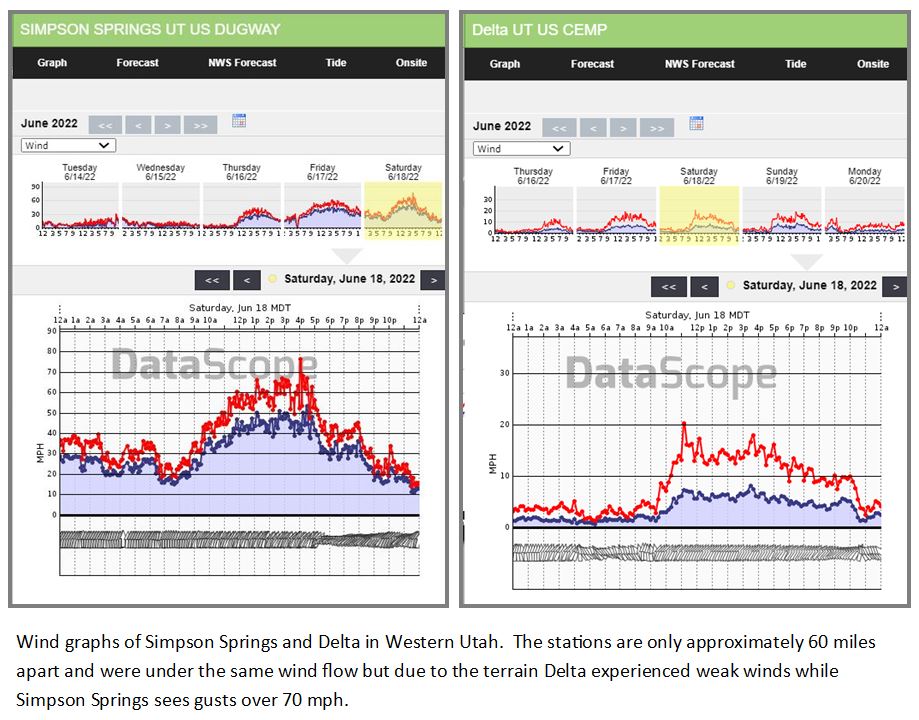Last week I had to make a phone call to my insurance agent to tell them that my car had been damaged by a wind storm. For most that would not be embarrassing but when you make your living forecasting winds and teach University Courses titled, “Natural Hazards and Disasters”, it might be hard to understand how I ended up stranded in a wind storm. If anyone was prepared to stay safe that would be “ME”. So what happened?

The week of June 17, 2022 saw an amplified storm track across the United States. A strong ridge over the Central US brought a heat wave while a deep upper-level trough started to carve out a spot over the Western US and then crept westward. The zone between these two air masses had strong pressure gradients where southerly winds developed. As the storm moved toward the Intermountain Region, winds picked up and were magnified by the terrain.

Wind forecasting is a tough business because air can’t move through solid barriers and terrain can block airflow and protect areas from strong winds. At the same time, those same barriers can form narrow passages that will accelerate winds as the air is forced to squeeze through gaps. Consequently, though an area may be under a high wind warning everyone won’t experience high winds and some areas will see calm winds. This can mean very changeable conditions, which is typical in the Rockies.

That Saturday I was driving along the route from Delta toward Simpson Springs and experienced just how quickly conditions can change and how fast you can get yourself in trouble. I had been monitoring the winds and we had no issues but we were in a remote that we had never been in before. Our navigation sent us off the main road and we ended up in an area where the soil was soft and we were no longer in a wind shadow. Suddenly we had little visibility as the dust pounded one side of our car. The lack of visibility caused us to stop but we couldn’t stay because the winds were pushing the dust into the car. Unknown to us our engine quickly filled with all the dust and dirt which caused the engine to overheat and the radiator to crack. And to make matters worse we no longer had cell service. Here is what it suddenly looked like as the dust poured down the windward side of our truck.

https://photos.google.com/photo/AF1QipP5JGZ3fIOKMAhMzw6jsOIcOuNRDjPtg0X-iW-g
Obviously, I made it out alive – I can’t say the same thing for my truck. I have been reminded of just how fast conditions can change and the importance of not pushing limits when there are weather warnings, especially when you are in an unfamiliar area.
I just heard a recent study found that most people will not heed an evacuation warning when a hurricane is closing in. As we head into the heart of hurricane season that is a worrisome statistic. In my classes, I find that students who live in areas where there are frequent weather warnings relate that they are casual in heeding a warning. Each time they are under a warning but don’t experience a disaster they get a little more relaxed and more willing to push the limits. So hopefully this will remind us all that conditions can change very quickly and that these warnings are there to remind us to pay close attention and be prepared.
